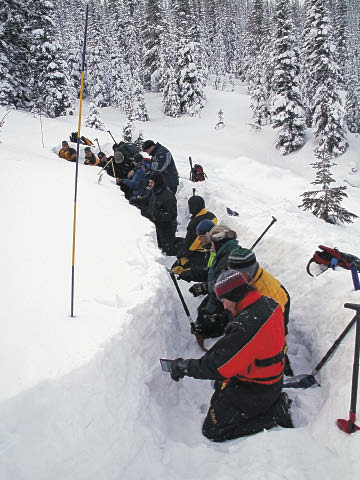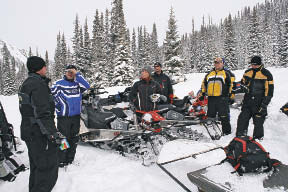-
Get training -  Without training you can't read nature's warning signs. Would it be rational to drive on a busy city street and not know what a red octagon means? Blowing through (not stopping at) a stop sign doesn't guarantee an accident, but it certainly increases your chances of a serious collision. Common sense isn't common . it is learned. We simply don't know what we don't know.
Without training you can't read nature's warning signs. Would it be rational to drive on a busy city street and not know what a red octagon means? Blowing through (not stopping at) a stop sign doesn't guarantee an accident, but it certainly increases your chances of a serious collision. Common sense isn't common . it is learned. We simply don't know what we don't know.
There are combinations of snowpack, terrain and travel habits that can get us into trouble. How can you know when you are in danger without training? How can you come up with solutions if you don't even know what the problem is? The best safety tool is sitting on your shoulders. Use it.
-
Practice with your gear - Most sledders realize they should carry a beacon, probe and shovel. Great. But these are rescue tools, they are not safety equipment. This gear does not generate a force field to deflect avalanches.
Can you imagine standing in the debris field of an avalanche with multiple people buried and looking to your buddy and saying "Now what?" The goal is not to find targets. The goal is to save as many lives as possible. Without hesitation you need to draw on the right skills and the right tools for the greatest chance of success. This isn't a movie. There are no re-takes or do-overs.
-
Check the avalanche conditions - Many untrained snowmobilers get caught in avalanches because they don't realize conditions are constantly changing. Free avalanche reports are available online and highlight issues in the current snowpack. This is priceless information. Get the report. It's like having a mountain guide in your pocket. Avalanches are about timing. The message is not "don't go," it is about learning when and where to go.
www.avalanche.org or www.avalanche.ca
-
Select riders equipped for the trip: Attitude, Education and Gear - Some days, some people will need to be left at home. You have complete control over who you ride with. Riding buddies can be assets or liabilities. Liabilities are untrained or unwilling to alter their riding styles to suit the current conditions and consequences. Gather a group of assets: cohesive riders with great gear, great skills and a team approach to enjoy many years of rewarding mountain sledding.
-
Agree on a Plan A & B - Considering all of the above: training, gear, conditions and the strengths of your group members, what expectations should your group set for the day? Get full agreement before you get in the truck. At the staging area or at the bottom of a big hill is not the time to say, "Today is not a good day to climb." Say what? Some of us drive hours for a great day's sledding. For an aggressive rider, the pressure to push forward is strong. However, if the group agreed to a Plan B in the pre-trip stage, it is more likely that the riders will choose a riding day with a wider safety margin.
 You can always have a great day in the mountains no matter the avalanche conditions. Training and gear can give riders new options to draw from when nature is telling us to take it easy. We all have the same goals: the best riding day possible and returning home to our family and friends with a big grin pasted on our faces as we walk in the door.
You can always have a great day in the mountains no matter the avalanche conditions. Training and gear can give riders new options to draw from when nature is telling us to take it easy. We all have the same goals: the best riding day possible and returning home to our family and friends with a big grin pasted on our faces as we walk in the door.
Every trip should be a return trip.
For more information on Zac's Tracs, log on to www.zacstracs.com.